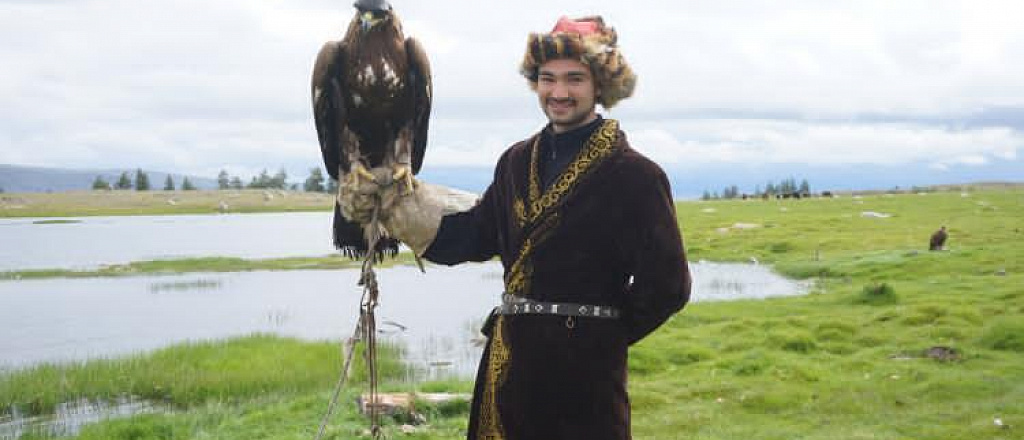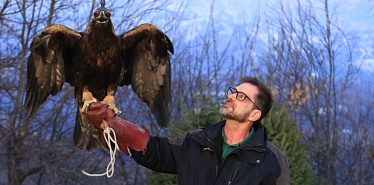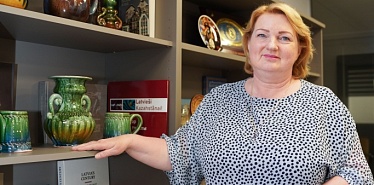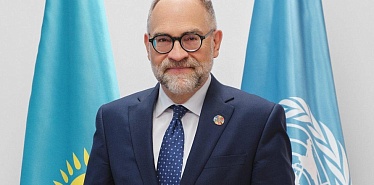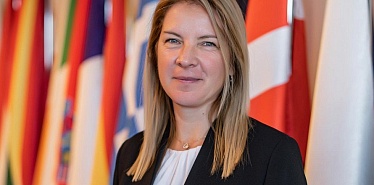Antonio Graceffo, Ulaanbaatar, economics professor, @antonio.graceffo
I am from New York, but I have been living in Asia for 20 years. I work as an economics professor and as an economist for think tanks in both Mongolia and US, focusing on the US-China trade war and how this impacts Mongolia. Previously, I worked in China for seven years, doing the same work for Chinese and US think tanks.
I have been in Mongolia just over a year now. My hobby is training and fighting in MMA and wrestling. I spent several years in China, studying and writing about Chinese wrestling and san da, which was part of my doctoral dissertation, which was published internationally as The Wrestler’s Dissertation. I was considering leaving at the end of the Fall Semester, but have decided to remain at least one more calendar year to complete an in-depth book on Mongolian wrestling culture.
About first impression
I came in June of 2019 first, for eight days, to see if I liked it. And I went nuts for everything here. Obviously, the wrestling and fighting culture was a big attraction for me. I have never been in a country where nearly 100% of men have wrestled from birth. The dynamic between men and women in Mongolian society and families is interesting, with women now, outpacing men in graduate education. The food really appealed to me. Mongolians eat mostly meat and a variety of dairy products. I am a huge meat-eater and in the rest of Asia, I always complained about not having enough meat. So, the diet here was perfect for me.
One of the projects I have worked on since coming here is the Mongolia Mars project, Mars-V, which is under the Mongolian Space Agency. I do not believe that when most people think of Mongolia, that they think of Mars. But, as this project develops, Mongolia hopes to be a world-leader in Mars exploration analogue training.
About difficulties
The bad thing is that I could not speak Mongolian. The good thing is that I had studied some Russian at university and could read Cyrillic. So, that made a huge difference in being able to get around by myself, reading street signs and menus and things. Many of the Mongolian words for modern concepts are simply English words, written with Cyrillic letters.
About differences
It is a developing country, with an average income of about $400 USD per month. Mongolia is much further along in its development than other countries in the same income bracket. But, of course, it is still developing, so a lot of the buildings are the old, Soviet style apartments and offices. The city has a heating grid, like in Eastern Europe and during winter, you regulate the temperature in your apartment by opening the windows. This is changing obviously. Ulaanbaatar has some very nice, modern, glass office buildings and I live in a serviced apartment, which is similar to what I would have anywhere else. Google maps and directions works reasonably well in the city, however, and this is a huge help.
About similarities
In Ulaanbaatar, people really want to be modern in many ways. They dress very nicely, even the students and of course people who work in offices. They are extremely aware of the outside world. They all seem to watch the news and read news on the internet. They are very aware of the outside world. But on the other hand, the Mongolians are very proud of their heritage and even my most modern friends and colleagues at banks and think tanks, even they maintain some of the old traditions. This is what I love about them. They are trying to find a balance, to obtain an education and work on a global level, while maintaining their traditions.
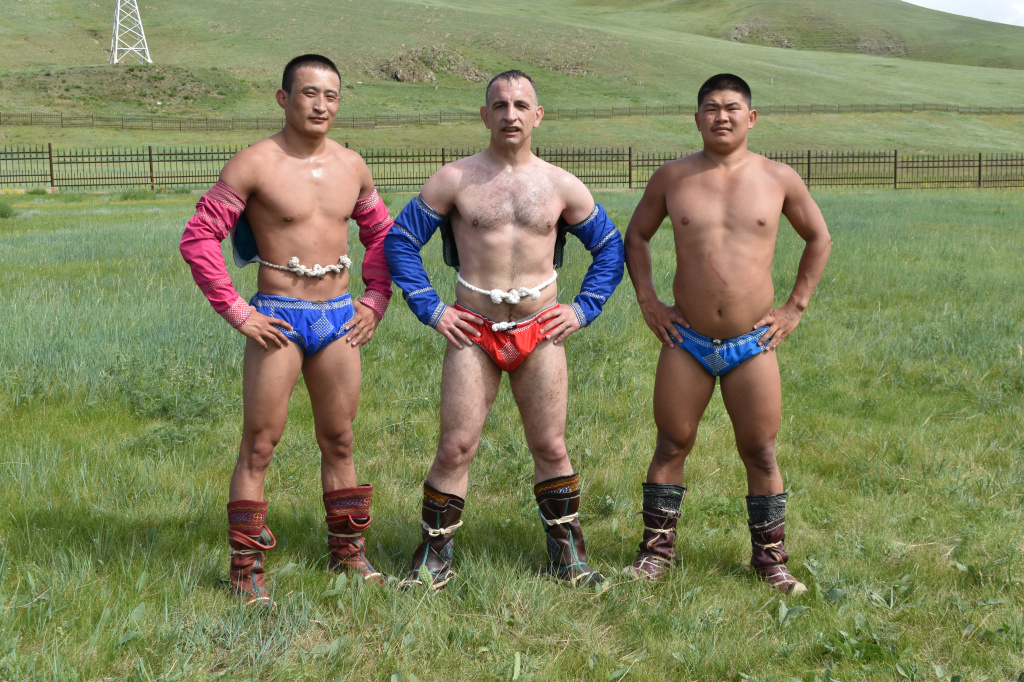
About people
Nomads are even more independent because they are not even tied to the land. A nomadic herder can just pick up and move today, tomorrow, or when it suits him. As a result, Mongolians are fiercely independent. Politically, they have always had to struggle to not get swallowed up by either Russia or China. This made them value their independence. And life on the steppes is very hard. The temperature variance is between -40 in winter and 35 in summer. People are tough and adaptable.
What I like there
I really like teaching at the university. The Mongolian young people are so bright and they are so optimistic. They are aware of the problems the country faces, and they know they are training to take those challenges.They know why they are at college and why they have to learn. I asked a student today how he learned English and he said that when he was young, he broke his leg and laying in bed for a whole summer with nothing to do, he watched free English lessons on TV because, “They showed clips from Bambi and for a Mongolian kid twenty years ago, that was like gold for our minds.” Another young Mongolian I worked with at Mars-V asked me if I taught economics, then he said, “We Mongolians don’t understand money. We have only had it for thirty years. That’s not long.” Wow! I was blown away by both of these young people who absolutely understood their country, the situation it faces now and the challenges they have overcome getting here. They know the challenges they face and the mission of helping the country develop and it makes me feel good, to think I can be part of that.
Interesting story
On the wrestling team, one of the high school kids was wearing a Genghis Khan T-shirt. Many Mongolians assume you know nothing about their country, so he was explaining to me who Genghis Khan was. Actually, it was both interesting and heart-warming to hear how much the young people and the wrestlers loved Genghis Khan and drew inspiration from him. He concluded by saying, in very broken English “Genghis Khan is Mongolia super hero.” Then he asked me, “Who is America super hero?” I laughed and was about to say, “I guess they all are.” But I thought of a better answer, “Captain America” I said. And he smiled and nodded his approval. Secretly, I am sure he thought Genghis Khan was better, but he seemed pleased that he had heard of America’s super hero and that he liked him.
Dmitry Kosintsev, Ulaanbaatar, B2B relations, @dmitry.kosintsev
I was born in Russia. Growing up in a small village in the Ural region, I was fascinated by the vastness of our world and dreamed about travelling. At the age of 22 I joined AIESEC, a youth-run NGO that aims to develop leadership in young people through international exchange opportunities. With this, I got access to a huge network, organized several volunteering projects in Russia and got a chance to live and work in three countries - Bosnia and Herzegovina, Moldova, Mongolia. These days I work in a local Mongolian company establishing B2B relations with organizations from other countries in order to provide work opportunities abroad for Mongolians.
I came to Mongolia in the end of July 2019, because I had one-year contract as the Head of the National Office of AIESEC in the country. It was my conscious choice though it was not about the country; I was searching for a specific role inside the organization and the National Office in Mongolia seemed to be a suitable option. Moreover, I was interested in countries outside of Europe, as I had spent a couple of years there.
About first impression
People always make the first impression. Those I met during my first days taught me a few things that other foreigners would always share with me later. Mongolians are hospitable and friendly, especially to foreigners; if something is forbidden but is desired then it can be done; time is relative, life can be very slow and almost completely unplanned.
About difficulties
Even though streets have names and there are numbers on the buildings, the address system we all know is not widely used in Mongolia. I might recollect just a couple of cases when people gave me their address telling the name of the street and the building. What you can hear very often is a name of a near-by place, which everyone knows. For example, I can tell my friends that I live at Gutliin, 22. Do not be confused - this is not the street and the house number. It literally means "Shoe shop №22" and it comes from the communist time when shops had numbers instead of names. Thus, finding a specific place might be challenging even for local people.
About differences
Traditions are still strong in Mongolia, even in the urban areas. At the same time, there is a very big gap between different generations: while old people might be nostalgic about Soviet era and communism, young people are quick to copy popular sub-cultures from the US, South Korea, Japan and other countries.
About people
Life might seem to be unplanned. This means chaos, changes of plans in the last moment, easy-going people. However, it all happens without much stress and people seem to be chill. This also means that the rhythm of life is slower, at least comparing with the countries I have lived in. I perceive Mongolians as friendly and caring people: they smile quite often and ready to help another person. One tradition that I have found to be fascinating: if you step on or kick someone's foot, you should shake hands with that person. Family plays an essential part in life and always comes first. Some people even bring their toddlers to work and then the whole office might help look after the kids.
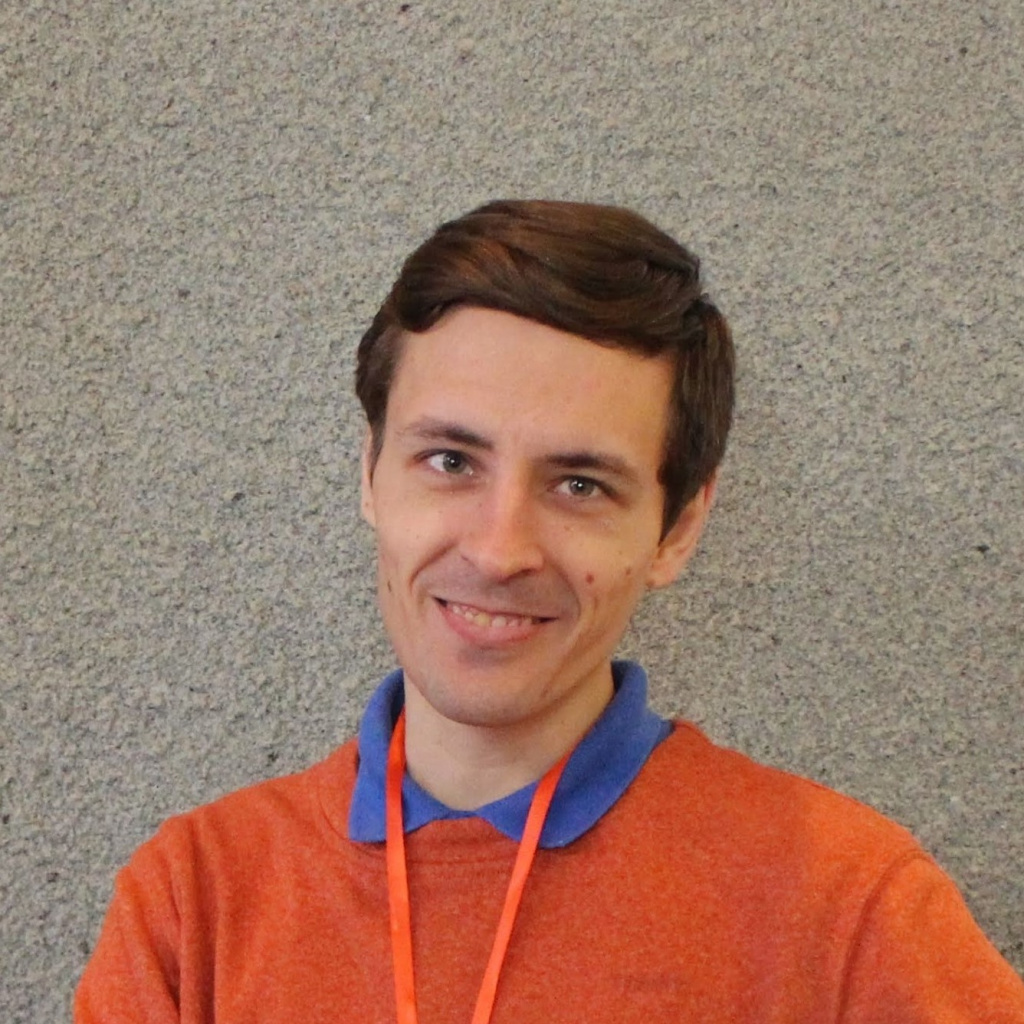
What I liked there
Urban life in Mongolia is quite developed but it takes just about one hour to go out of Ulaanbaatar. This brings a huge change, as the countryside is vast, beautiful and full of colors. It is completely different from the views I saw in the regions that I used to live in Russia. And the biggest difference is in the sky: it is often blue, without clouds.
Interesting story
I like hitchhiking and I try it in countries I visit. I knew that in Mongolia it could be completely different - if possible at all. There are two main challenges: road network and expectations from drivers. While hitchhiking, you can be dropped in an area without asphalt roads. In this case, you might find yourself in a steppe on a dirt road with a several parallel lines. Stopping a car in this situation becomes challenging. Luckily, it did not happen to me when I decided to go from Ulaanbaatar to the Russian border, even though a huge part of the road that time was under construction and cars had to follow a dirt road.
Antonio Mercatante, master student, teacher, @antoniomercatante
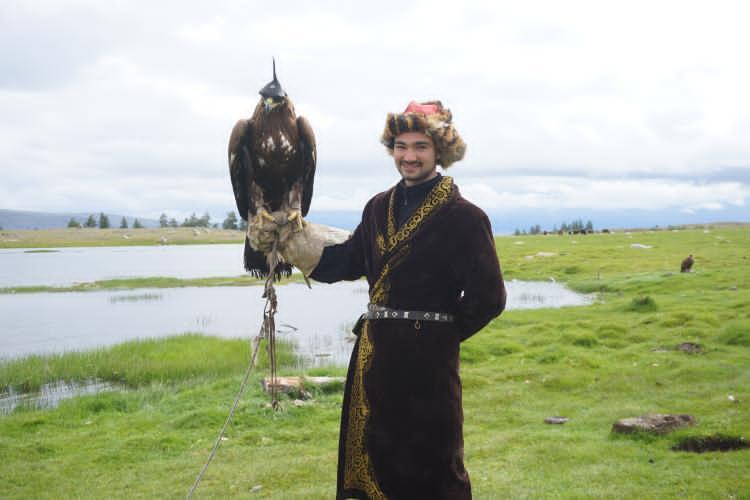
I am 23 years old and from Detroit, Michigan. Currently, I am a Global Health Epidemiology master's candidate at the University of Michigan School of Public Health.
I was part of United States organization called Peace Corps where I lived and worked in Mongolia for two years as a public health educator at the Uvurkhangai Polytechnical College in Arvaikheer, Uvurkhangai. Peace Corps Mongolia had volunteers in nearly all of Mongolia's Aimags prior to the evacuation of it is volunteers due to the COVID-19 pandemic. I decided to come to Mongolia to work alongside the Mongolian people to teach rural communities about health, fitness, first aid, nutrition, hygiene, life skills and risk management.
About first impression
My first impression of Mongolia was it is raw untouched landscapes and it is undeniably welcoming culture. Once outside of Ulaanbataar, the Mongolian countryside is truly breathtaking and is full of untouched geographical features. Scattered throughout the landscape were gers, full of warm-hearted Mongolians that were always eager to share their unique nomadic culture with me.
About difficulties
Language. It took nearly four months of studying and practice before I was comfortable speaking and interacting with locals in my community. Thankfully, my workplace was very accommodating to my limited language skills.
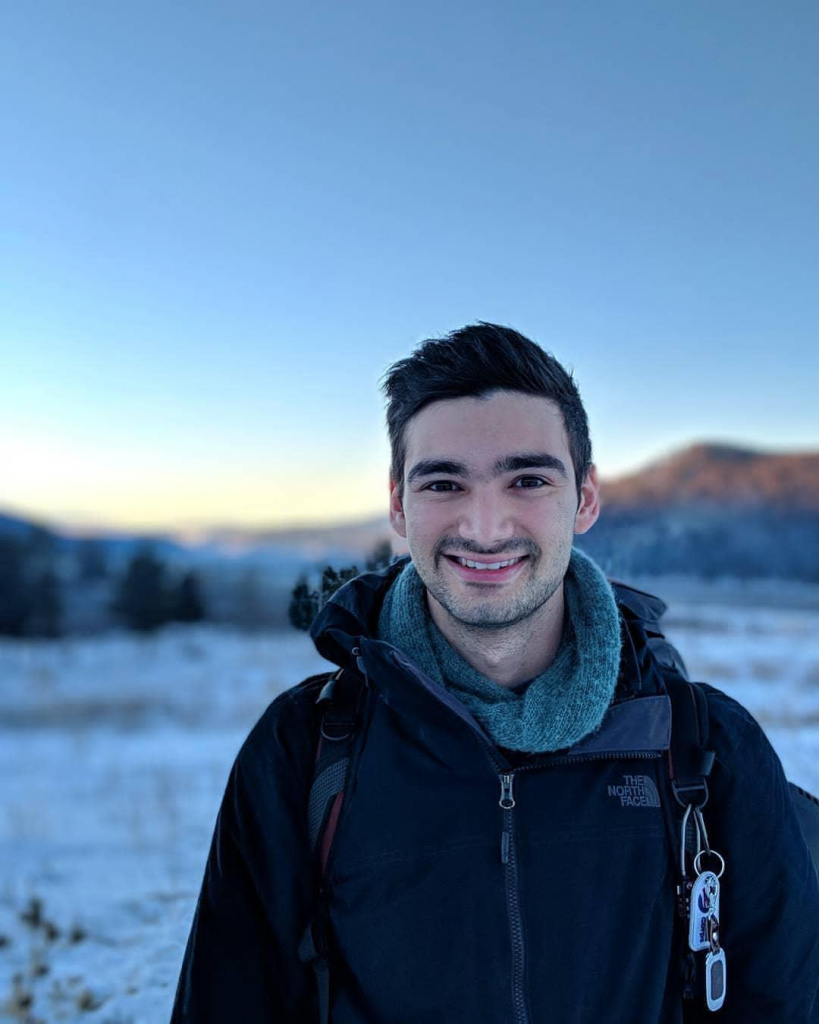
About differences
The biggest difference that I noticed when I arrived to Mongolia was how comfortable Mongolians were with their neighbors. When I was living with my Mongolian host family, I was very surprised by how often the neighbors would walk into the ger just to talk or hangout. I liked that there was a strong sense of community within the town or city that people lived in.
About similarities
No matter what country you go to, there are always similarities between cultures. Something that I noticed that was similar between the cultures of the United States and Mongolia was the desire to be the best at whatever competition that you are involved with.
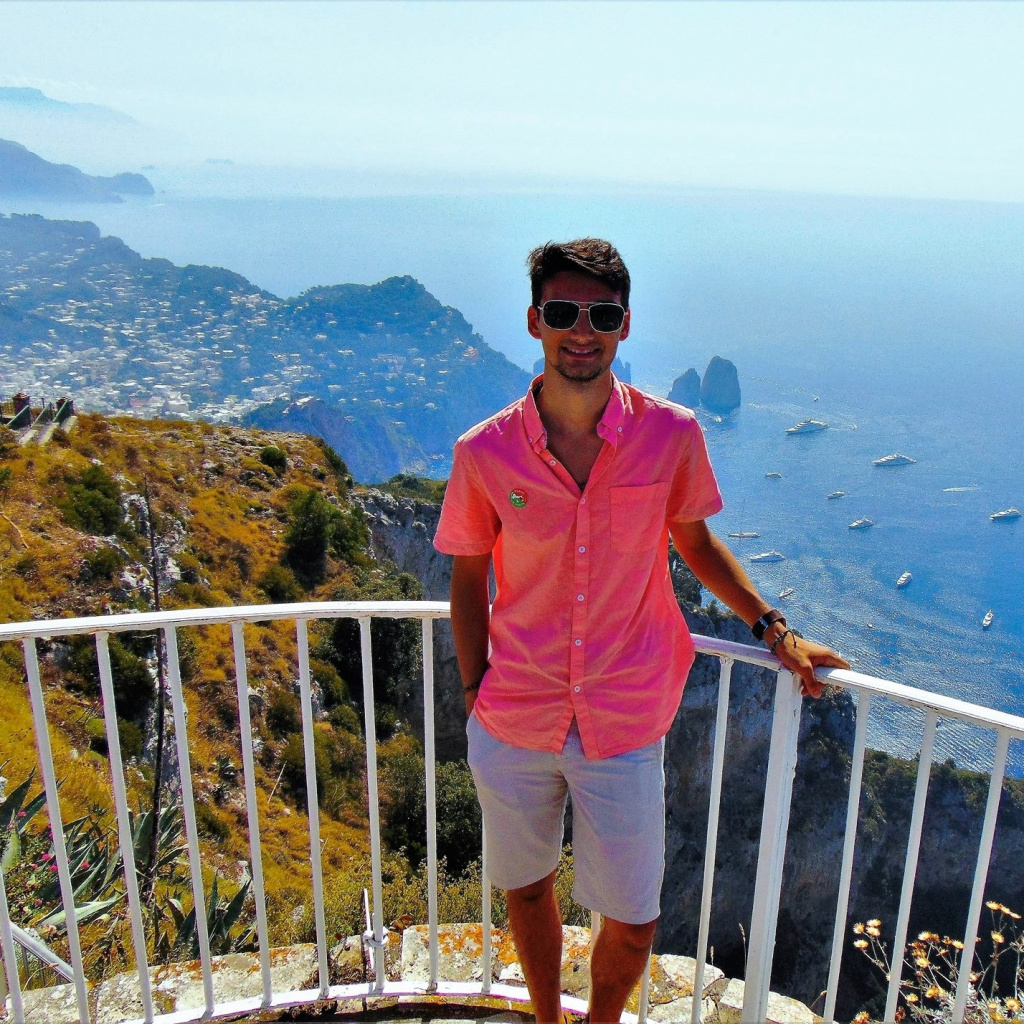
About people
The way that Mongolian people live is unique. I say this because it depends a lot, on where you are in Mongolia. If you spend time in Ulaanbataar, people seem to be very focused on business, technology, and nightlife like South Korea, Japan, Europe, or the USA but if you are out in the countryside people seem to be focused on more traditional aspects of the Mongolian culture like herding and dairy farming. Now, in 2020, these aspects tend to overlap in aimag centers but in my experience, I believe that the style of living differs depending on where you are in the country.
What I like there
Mongolia's landscapes and nomadic herding culture is fascinating and is truly unique to Mongolia. The United States does not have similar features and I really liked those aspects of Mongolia.
Interesting story
I went with some other teachers from my school to the Uvurkhangai countryside to recruit new students for the upcoming school year. However, the weather was not cooperating with us. We ended up stranded for three days by a snowstorm outside of Bat-Ulziisoum by the waterfall. We did not have any food or shelter but some local yak and goat herders brought us into their gers, fed us, and gave us a place to sleep during the storm. They shared stories and songs with us the whole time we were there and were very interested in why I was in Mongolia. Once the storm ceded, and the route back to Bat-Ulzii could be driven, we were able to head home. It was an incredible experience and one that I enjoy reflecting on.








